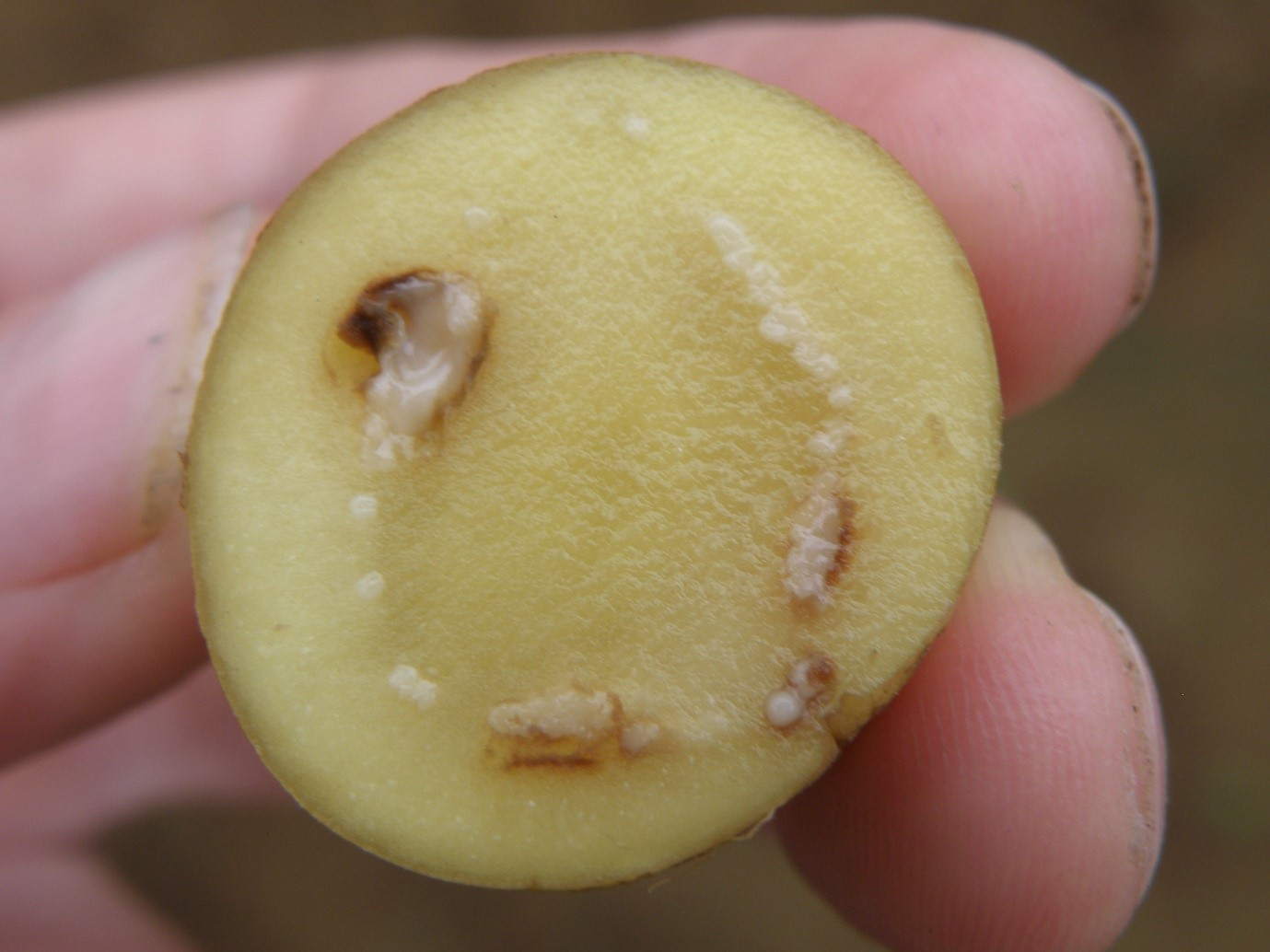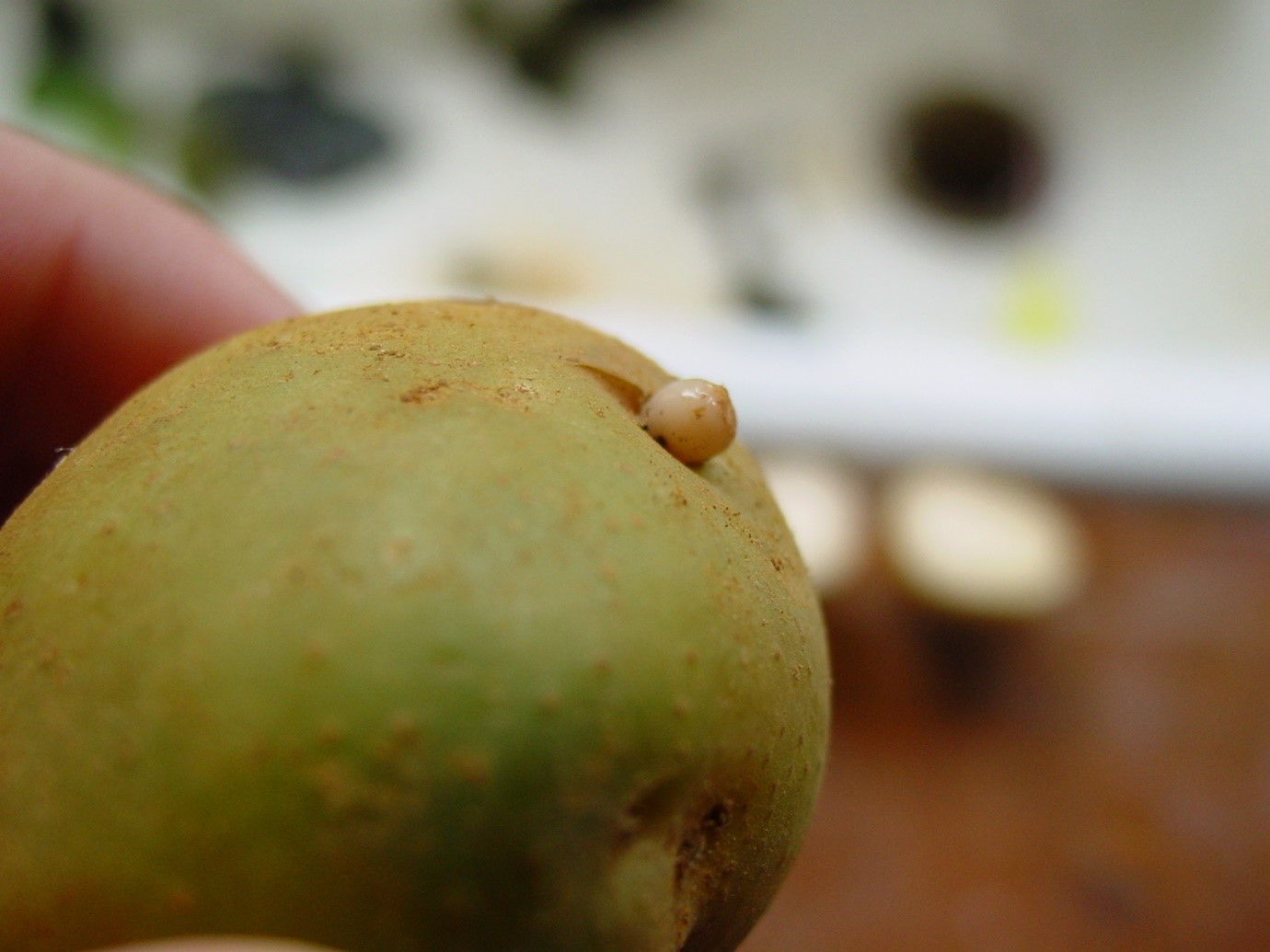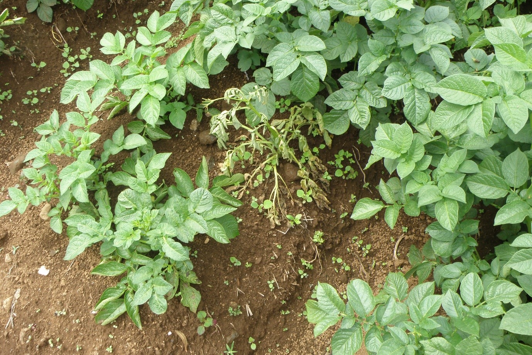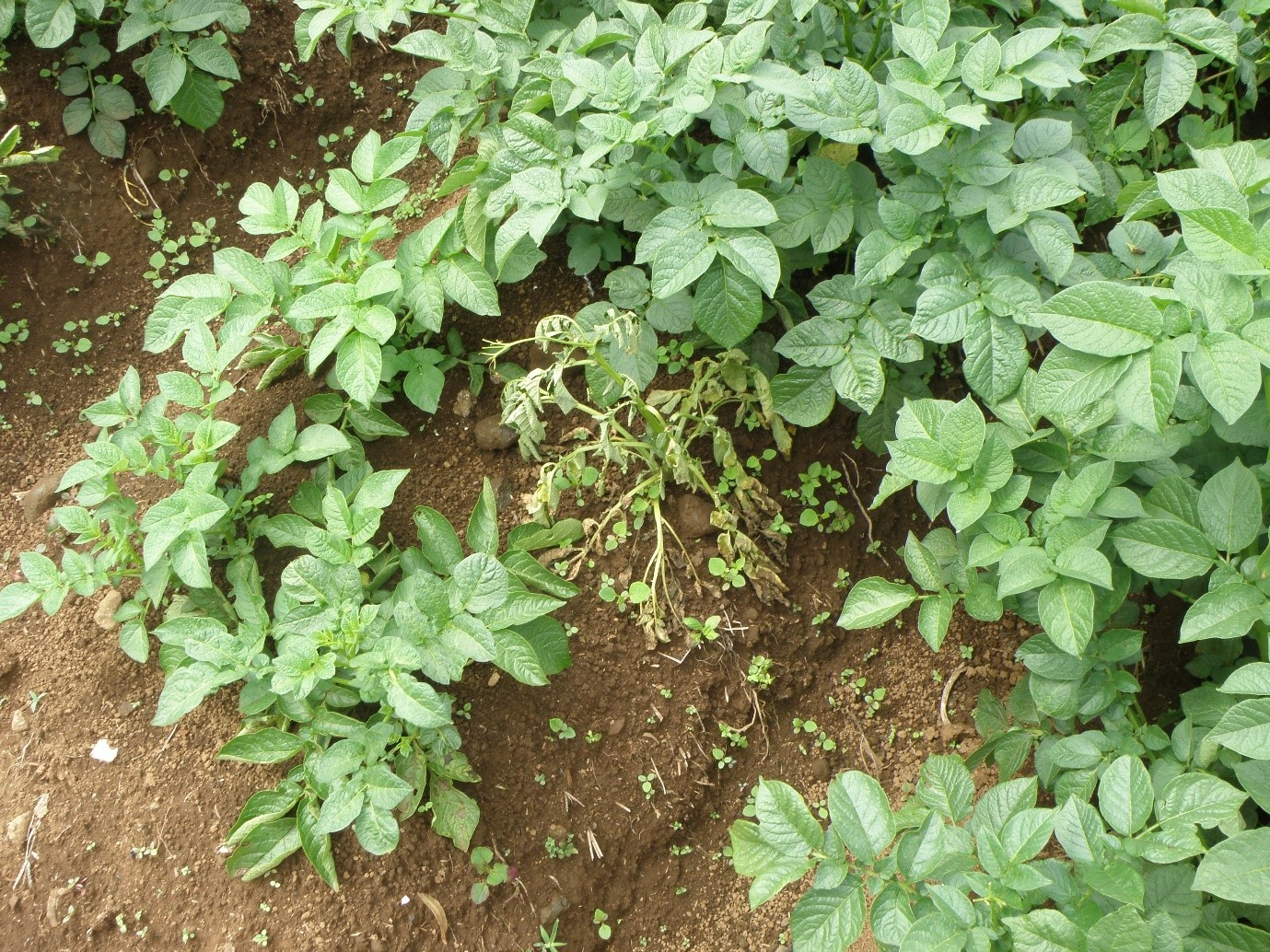
Bacterial wilt is a declared pest in WA
Bacterial wilt of potato is not known to occur in WA and must be reported to the department if found or suspected to be present in WA.
About bacterial wilt of potato
Bacterial wilt (Ralstonia solanacearum) is a serious disease of potatoes that can cause crop losses of more than 90%. It is not known to be present in WA.
The main host of bacterial wilt is potato, but the disease can also affect tomato, eggplant, geranium (Pelargonium) and the weed blackberry nightshade (Solanum nigrum).
- Bacterial wilt of potatoes appears as sudden wilting of one or more stems of the potato plant. This symptom can be mistaken for water stress. Plants may also look stunted and begin to yellow.
- Brown discolouration is visible in the vascular tissues of the stem and tubers. When stems or tubers are cut and slight pressure applied, creamy bacterial slime comes from the infected vascular elements.
- Bacterial slime oozes from the eyes of tubers and soil sticks to the tubers where the slime has emerged.
- Secondary infection can cause decay of the whole tuber.
- External symptoms and internal browning are not always visible in infected plants, and potato tubers can be infected without any visible symptoms.
|
Wilting plants can be a sign of bacterial wilt infection. |
|
|
An infected tuber that has been cut in half. Bacteria are oozing from the vascular ring of the tuber. |
|
|
Bacterial ooze appearing from the eye of the potato. |
 |
Bacterial wilt can cause total loss of potato crops and prevent the use of land for potato production for several years. It also causes tomato plants to wilt with a reduction of yield and quality.
- New outbreaks of bacterial wilt are most often caused when infected potato tubers that appear healthy are planted.
- The disease can also spread in contaminated soil carried on boots, tools and cultivation equipment and contaminated irrigation or flood water.
- Weed hosts on the side of rivers and streams can carry the bacterial wilt pathogen.
- The disease can survive up to 4 years in the soil and in plant debris
- Bacterial wilt is generally favoured by high soil moisture and low temperatures.
Legal duty to report
Bacterial wilt of potato is not known to occur in WA.
Ralstonia solanacearum (Smith 1896) Yabuuchi et al., 1995 is declared organism under section 12 of the Biosecurity and Agriculture Management Act 2007.
This means that any person who finds or suspects the presence of bacterial wilt must report it to DPIRD.
WA's freedom from bacterial wilt is supported by general and specific surveillance, potato seed certification, and specific import requirements to prevent its entry.


